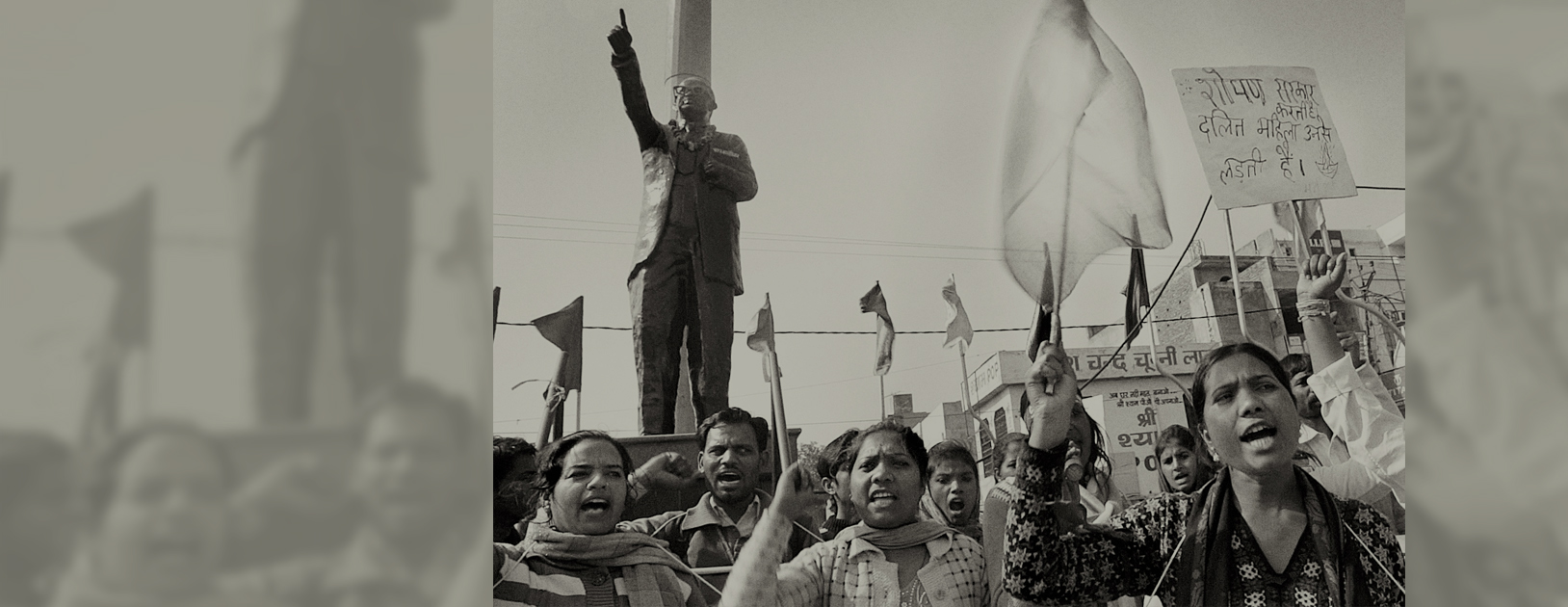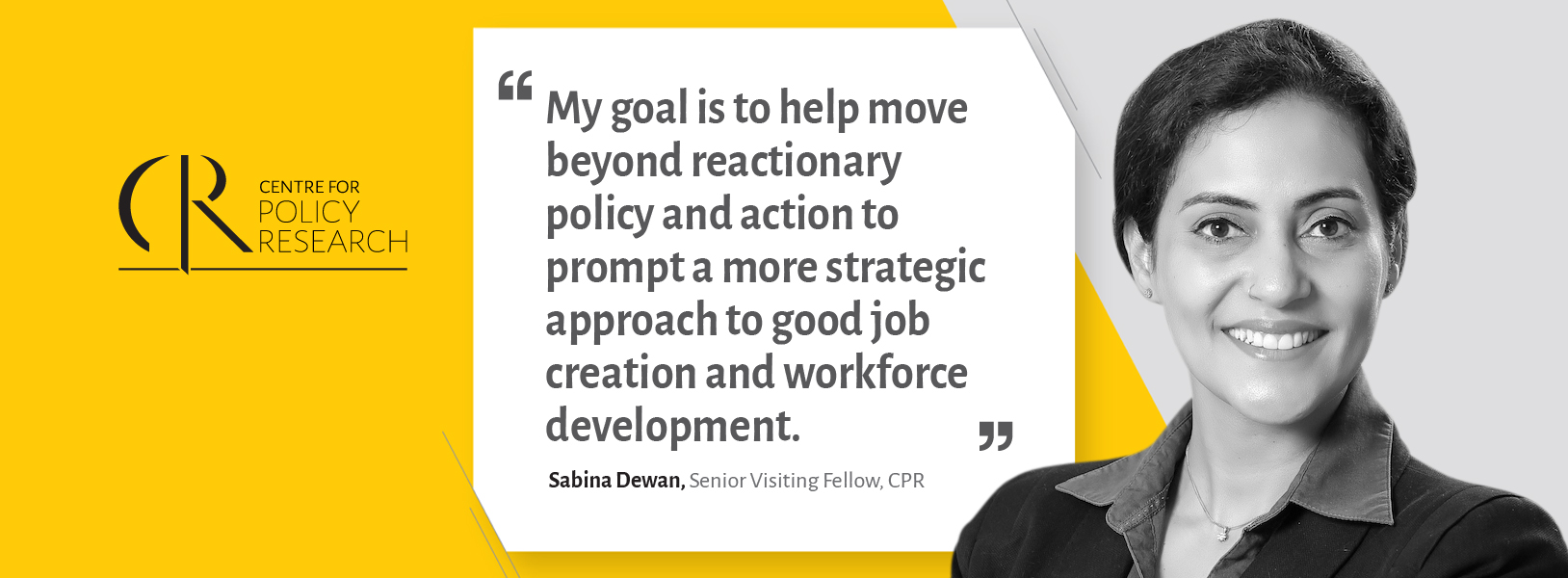In Need of Structural Repairs: The Social Justice Project
D Shyam Babu
July 3, 2019

In Need of Structural Repairs: The Social Justice Project
AS PART OF ‘POLICY CHALLENGES – 2019-2024: THE BIG POLICY QUESTIONS FOR THE NEW GOVERNMENT AND POSSIBLE PATHWAYS’
CPR IDENTITY DISCRIMINATION RIGHTS
By D Shyam Babu
A conspicuous feature of Indian society is the caste system, which is birth-based and hierarchical. In that system, Brahmins (priests), Kshatriyas (warriors) and Vaishyas (tradespeople) are defined as the twice-born and hence upper castes, while the Shudras (artisans) are the servile caste whose sole purpose is to serve the top three castes. The Dalits (former ‘untouchables’) are outside the caste system, hence the moniker Panchamas (the fifth caste, or the outcastes) – a group seen as not even fit to be part of the fourth, servile group, the Shudras. However, recent policy innovations aimed at bringing about inclusive growth have sought to blur these distinctions in such a way as to turn the social justice project under the Constitution of India on its head. It is one thing to assert that every group that needs the state’s support must get it, but it is altogether different to say that the highest in the caste system are as eligible for the state’s patronage as the lowest.
Parts III and Part XVI are the heart and soul of the Constitution. While Part III grants to all Indians the fundamental rights akin to any other democracy, Part XVI addresses the special needs of certain sections – the Scheduled Castes and Scheduled Tribes (SC/STs) and others – who were not in a position to access their rights primarily due to the caste discrimination they suffer from. This section (from Articles 330 to 342) is based on the assumption that while the SC/STs are the victims of caste, there might be other ‘socially and educationally backward classes’ left out of development and in need of the state’s help. As the founding fathers were not sure of the identity of this latter group, they stipulated the establishment of a commission under Article 340 to find out who these classes were and recommend measures to help them; this group came to be known as the Other Backward Classes (OBCs). While the exercise to identify those in need of help has proven to be a never-ending process, it seems to have now entered a phase of chaos.
Of late, two amendments to the Constitution (123rd and 124th amendments) have sought to effect social engineering of a problematic kind. While the 123rd’s import is that Shudras (OBCs) are as badly off as Dalits and tribals (SC/STs), the 124th equates the upper castes – Economically Backward Classes (EBCs) – with Shudras. The blurring of well-recognized social cleavages appears to extend the logic that acknowledging social divisions like caste accentuates those divisions. These two legislative innovations coupled with two other related developments, discussed below, have turned the social justice project under the Constitution on its head.
Recent Developments
NCBC
Through the 123rd amendment the government has set up the National Commission for the Backward Classes (NCBC). Its earlier avatar was a mere entity created by an Act of Parliament; the new version is ‘Constitutional’. The amendment inserted a new Article, 338(B), which falls in Part XVI. The new Article is actually a replica of Article 338 under which the National Commission for the SC/STs (NCSCST) was set up. In the early 2000s, the government bifurcated the NCSCST into two: one for the SCs under the original Article 338 and the other, Article 338A which is a replica of the former. Given the almost similar condition of these two groups and the felt need for an exclusive commission for the STs, the bifurcation was amply justified. However, the same treatment for the NCBC amounts to clubbing OBCs with the SC/STs. There are two dangers implicit in the move.
One, under Sub-clause 5(b), all three commissions are enjoined ‘to inquire into specific complaints with respect to the deprivation of rights and safeguards’ of their respective wards. It is incorrect to assume that OBCs are similar to the SC/STs to such an extent that they need similar safeguards. A logical corollary is that an ill-defined right is bound to kick off a new breed of litigation. The aim of the Constitution is to pull the SC/STs out of their low condition but the new NCBC is by default designed to push OBCs into a condition similar to the SC/STs. In other words, the ‘reform’ will end up converting OBCs into SC/STs.
Two, under Clause 8, all three commissions are given ‘the powers of a civil court trying a suit’. The original provision in the case of SC/STs is due to the fact that these two groups are systematically subjected to discrimination, intimidation and violence. Moreover, in many instances of ‘atrocities’ against these two groups, the accused happen to be the OBCs. Therefore, next time an instance of atrocity is reported wherein the OBCs are the alleged perpetrators, the NCSC or NCST will find itself pitted against NCBC.
Quota for EBCs
Through the 124th amendment the government introduced 10% quota in educational institutions and central government jobs for EBCs. Phase 1 of our quota system sought to help the victims of caste (the SC/STs), and phase 2 focused on those who are mere left behind in the caste system (OBCs). The current phase 3 is geared to benefit those who are at the top of the caste heap, the upper castes, who are not the victims of caste system but its perpetrators. It cannot be anybody’s case that the poor among the so-called upper castes do not deserve state patronage. Under Article 340, the founding fathers did envisage a mechanism to help the needy (‘socially and educationally backward classes’) but what they had in mind was allocation of financial resources (‘the grants that should be made for the purpose’), not setting aside quotas. Although the finer point is a lost cause, the issue deserves attention as it has the potential to make the whole social justice project unworkable.
Verdict on the SC/ST Act
Another fairly recent related development is the Supreme Court’s verdict in March 2018 wherein it sought to ‘dilute’ the SC/ST Atrocities (Prevention) Act, 1989. The Supreme Court reasoned that the misuse of the Act was so rampant that it needed to provide safeguards for those falsely accused under the Act. The ensuing controversy hinged on two opposite arguments: one holds that the atrocities suffered by the SC/STs still remain widespread, not warranting any dilution of the Act, and the other view holds that misuse of the Act is sufficiently widespread – the apex court’s position in the judgment. So far, only opinions have been flying back and forth, but the nation has no idea of the facts. Therefore, even though the matter is sub judice, there is an urgent need to revisit Part XVI, and the laws and institutions that emanated from it, along with collecting instances of use and misuse.
Money without Motive
Separate budgetary allocations for the betterment of SC/STs are classified under two heads: the Scheduled Caste Sub-Plan and the Tribal Sub-Plan. The logic behind these plans is that the government must allocate resources for the welfare of these two groups and the percentage of those allocations must be in proportion to their population in the country. However, the allocations are split vertically and horizontally, resulting in the extraordinary situation of some departments receiving large amounts (sometimes hundreds of crores) under these plans with no or insufficient guidelines on how to spend the money. In the past, the Planning Commission was the nodal agency for this head but it didn’t do a great job. Although the NITI Ayog is now the nodal agency, it has expressed its inability to discharge this duty. Therefore, no agency or ministry is bothered about a large chunk of budgeted amount (in the range of one-forth of the national budget). For example, this year a few scientific and agricultural research institutions suddenly woke up less than a month before the closure of financial year to the fact that they needed to spend money on the welfare of SC/STs.
Broad Policy Direction
The government must revisit Part XVI of the Constitution with the aim of according its social justice project the dignity it deserves. Moreover, the recent toxic accretions would, if not removed, erode the whole mechanism. For example, in the context of reservations in educational institutions and quotas in government jobs, the OBCs are equated with the SC/STs. It will be a small step to extend the logic to political representation for the OBCs in the Lok Sabha and state assemblies. Therefore, the government must:
Rephrase Article 338B through an amendment so as to redefine the aims and objectives of the NCBC. OBCs are truly in need of state support in terms of improving their educational and social standing, but equating them with the Dalits will push them artificially into the ranks of the latter. It will not serve the nation to increase the number of Dalits.
Re-categorize OBCs and EBCs as a single group under Article 340, since the EBCs among the upper castes are ‘educationally backward classes’ and the OBCs are both ‘socially and educationally backward classes’. A way to solve the caste problem is to put in place policies that will eventually reduce the number(s) of its victims. And clubbing OBCs and EBCs will be the first step in that endeavour.
Appoint a statutory study group to examine the working of the 1989 SC/ST Atrocities Act to assess the extent of the Act’s misuse and whether the misuse warrants remedial measures. Every Act/legislation is liable to be misused, but we must ascertain the degree of that misuse to introduce remedial measures to protect the innocent.
Create a nodal agency to determine how the thousands of crores of rupees allocated under the SCSP and TSP are to be spent. This is an extremely sensitive area as it has the potential to create disaffection against SC/ST employees who are meant to be the beneficiaries of these schemes.
Other pieces as part of CPR’s policy document, ‘Policy Challenges – 2019-2024’ can be accessed below:



